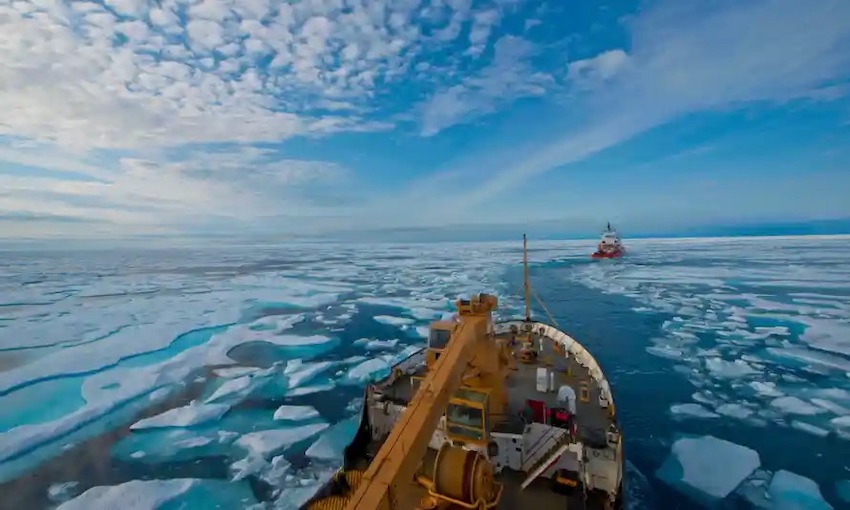NEW mandatory measures to cut the carbon intensity of international shipping have been adopted by the International Maritime Organization, setting shipping on a course to meet greenhouse gas reduction targets established in the 2018 Initial IMO Strategy for Reducing GHG Emissions from Ships.
IMO’s Marine Environment Protection Committee (MEPC 76), meeting in a remote session from 10-17 June 2021, adopted amendments to the International Convention for the Prevention of Pollution from Ships (MARPOL) Annex VI that will require ships to reduce their greenhouse gas emissions. These amendments combine technical and operational approaches to improve the energy efficiency of ships, also providing important building blocks for future GHG reduction measures.
The new measures will require all ships to calculate their Energy Efficiency Existing Ship Index (EEXI) following technical means to improve their energy efficiency and to establish their annual operational carbon intensity indicator (CII) and CII rating. Carbon intensity links the GHG emissions to the amount of cargo carried over distance travelled.
Ships will get a rating of their energy efficiency (A, B, C, D, E – where A is the best). Administrations, port authorities and other stakeholders as appropriate, are encouraged to provide incentives to ships rated as A or B also sending out a strong signal to the market and financial sector.
A ship rated D for three consecutive years, or E, is required to submit a corrective action plan, to show how the required index (C or above) would be achieved.
The amendments to MARPOL Annex VI (adopted in a consolidated revised Annex VI) are expected to enter into force on 1 November 2022, with the requirements for EEXI and CII certification coming into effect from 1 January 2023. This means that the first annual reporting will be completed in 2023, with the first rating given in 2024.
A review clause requires the IMO to review the effectiveness of the implementation of the CII and EEXI requirements, by 1 January 2026 at the latest, and, if necessary, develop and adopt further amendments.
Impact assessment
In adopting the measure, MEPC also considered the outcomes of a comprehensive impact assessment of the measure which examined potential negative impacts on States, and agreed to keep the impacts on States of the measure under review so that any necessary adjustments can be made.
In adopting the amendments, the MEPC agreed in its resolution to undertake a lessons-learned exercise from the comprehensive impact assessment of the amendments to MARPOL Annex VI, with a view to improving the procedure for conducting future impact assessments.
Secretary-General Lim welcomed the approval and consideration of the outcome of the related comprehensive impact assessment and the decision to keep impacts of the measure under review and to initiate a lessons-learned exercise.
MARPOL Annex VI has 100 contracting states, who between them represent 96.65% of world merchant shipping by tonnage.
The MEPC also adopted a work plan to develop mid- and long-term measures to further cut shipping’s GHG emissions, in line with the Initial IMO strategy on reduction of GHG from ships
Guidelines adopted
Alongside the MARPOL amendments, the MEPC adopted related guidelines to support the implementation of the amendments.
The guidelines include the 2021 guidelines on the operational carbon intensity reduction factors relative to reference lines (CII Reduction factor Guidelines, G3). This includes the required reduction (Z) factor, which is set at a rate, relative to 2019, of 11% by 2026. This would be further strengthened after that date, taking into account the review of the measure and latest climate science.
Prohibiting HFO in the Arctic
The MEPC adopted amendments to MARPOL Annex I (addition of a new regulation 43A) to introduce a prohibition on the use and carriage for use as fuel of heavy fuel oil by ships in Arctic waters on and after 1 July 2024.
The prohibition will cover the use and carriage for use as fuel of oils having a density at 15°C higher than 900 kg/m3 or a kinematic viscosity at 50°C higher than 180 mm2/s. Ships engaged in securing the safety of ships, or in search and rescue operations, and ships dedicated to oil spill preparedness and response would be exempted. Ships which meet certain construction standards with regard to oil fuel tank protection would need to comply on and after 1 July 2029.
A Party to MARPOL with a coastline bordering Arctic waters may temporarily waive the requirements for ships flying its flag while operating in waters subject to that Party’s sovereignty or jurisdiction, up to 1 July 2029.

